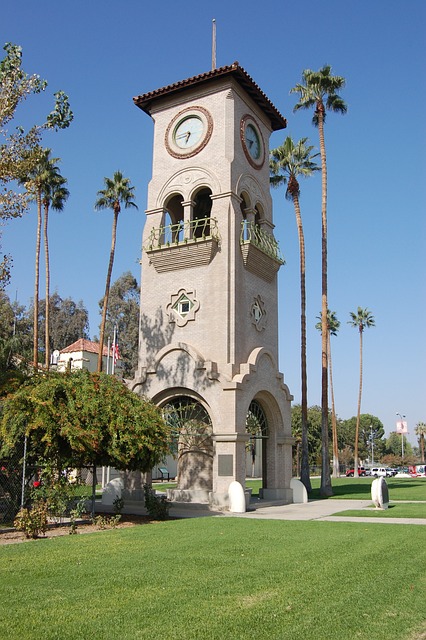This journey through Kern County’s historic landmarks reveals the stories, people, and events that have left an indelible mark on the landscape.
Bakersfield – The Heartbeat of Kern County
Bakersfield, the county seat, is a city with a rich history dating back to the 19th century. One of the most notable landmarks is the Kern County Museum, which spans 16 acres and features over 50 historic structures. Here, visitors can explore the Pioneer Village, where buildings from the late 1800s have been preserved and relocated. The museum also houses the Bakersfield Sound exhibit, celebrating the city’s unique contribution to country music, with artifacts from legends like Buck Owens and Merle Haggard.
Another must-see in Bakersfield is the Fox Theater, a classic 1930s movie palace that has been beautifully restored. The theater hosts a variety of events, from concerts to classic film screenings, making it a cultural hub for the community. Bakersfield’s history is also reflected in its architecture, with many buildings downtown showcasing the Art Deco style that was popular in the early 20th century.
Tehachapi – A Scenic Mountain Retreat
Tehachapi, a small town nestled in the Tehachapi Mountains, is famous for its stunning vistas and historic sites. The Tehachapi Depot Museum is a highlight, located in a beautifully restored 1904 Southern Pacific Railroad depot. The museum offers a fascinating look at the town’s railroad history, with exhibits on the famous Tehachapi Loop, an engineering marvel where trains gain elevation by spiraling over themselves.
The Errea House Museum is another gem, a Victorian-style home built in the 1880s that offers a glimpse into life during that period. Tehachapi is also known for its wind farms, which dot the landscape with thousands of wind turbines. This region is one of the largest producers of wind energy in the world, and the Tehachapi Wind Energy Center offers tours and information about this impressive feat of modern engineering.
Delano – A Hub of Labor History
Delano, a city with a deep agricultural heritage, is perhaps best known for its role in the labor movement. The Cesar E. Chavez National Monument is located here, dedicated to the life and work of the iconic labor leader who co-founded the United Farm Workers. The site includes Chavez’s grave, a visitor center, and the Villa La Paz, where Chavez lived and worked. The monument serves as a powerful reminder of the struggles and triumphs of the farmworker movement.
Another notable landmark in Delano is the Agbayani Village, which was built in the 1970s as a retirement community for Filipino farmworkers. This village symbolizes the contributions and hardships faced by Filipino laborers in the Central Valley. Visitors can learn about the history of these workers and their impact on the region’s agricultural industry.
Kern River Valley – Nature and History Combined
The Kern River Valley, encompassing communities like Lake Isabella and Kernville, offers a blend of natural beauty and historical significance. The Kern Valley Museum in Kernville provides insights into the gold rush era, with exhibits on mining, Native American artifacts, and the valley’s early settlers. Nearby, the Silver City Ghost Town features reconstructed buildings from the 1850s, giving visitors a taste of what life was like during the gold rush.
Outdoor enthusiasts will appreciate the historic Kern River Hatchery, established in 1928, which still operates today, raising and releasing fish into the Kern River. The valley is also home to numerous historic trails, such as the Pacific Crest Trail, which passes through the region and offers breathtaking views and a sense of connection to the past.
Taft – Oil Boom Town
Taft, a small town in the southwestern part of the county, is synonymous with California’s oil boom. The West Kern Oil Museum is a must-visit, offering a comprehensive look at the region’s oil history. The museum features antique drilling equipment, a replica of an early 20th-century oil camp, and informative exhibits about the geology and technology of oil extraction.
One of Taft’s most unique landmarks is the Taft Oilworkers Monument, a striking sculpture that honors the men and women who have worked in the oil industry. This 37-foot-tall statue depicts an oil worker in a hard hat, standing proudly with a wrench, symbolizing the town’s enduring connection to the oil industry.
Ridgecrest – Gateway to the Desert
Ridgecrest, located on the edge of the Mojave Desert, is a city rich in history and natural beauty. The Maturango Museum is the perfect starting point for exploring the area’s cultural heritage. The museum features exhibits on the Native American tribes of the region, as well as displays on the geology and wildlife of the desert.
One of the most fascinating sites near Ridgecrest is the Coso Rock Art District, home to one of the largest collections of Native American petroglyphs in North America. These ancient carvings, some of which are over 10,000 years old, offer a glimpse into the lives and beliefs of the region’s earliest inhabitants. The petroglyphs are accessible through guided tours, providing an unforgettable experience for history buffs and outdoor enthusiasts alike.
Lesser-Known Gems
- California Living Museum (CALM): Located in Bakersfield, this museum and zoo focus on native Californian flora and fauna, with a strong emphasis on conservation and education.
- Walker Basin: A beautiful, secluded area with rich historical ties to the Native American tribes and early settlers of Kern County.
- Famoso Raceway: Known for its annual March Meet, a historic drag racing event that draws enthusiasts from all over the country.
Kern County is a fascinating blend of historical landmarks, each with its own unique story to tell. From the bustling streets of Bakersfield to the serene landscapes of the Tehachapi Mountains, this region offers a wealth of experiences for history enthusiasts and casual visitors alike. So, pack your bags and get ready to explore the captivating history that awaits in Kern County!


